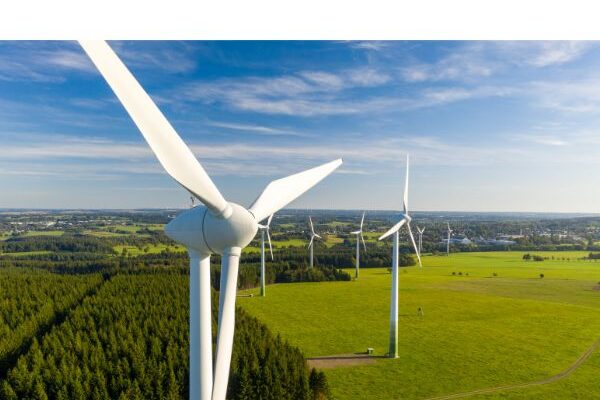If you’re looking to cut the cost of your business energy bills, it is worth knowing a little bit more about what you are getting charged for. Your business energy bill is the first thing to go through when you think something isn’t right with the amount you are paying, or if you are looking for a better deal.
How is the business energy bill calculated?
A business energy bill consists of more than just your energy usage. It also includes network costs, environmental costs, climate change levy, standing charges as well as VAT. Even though the unit price is lower than domestic energy, other costs makes the bill a lot higher.
Other direct factors influence your company’s energy costs. While low unit prices help to keep your expenses down, the number of staff, the size of your premises, and how energy efficient your business is are all factors in your overall gas bill.

Know your business energy bill
They are usually sent monthly or quarterly and for micro and small businesses include an estimate of how much they use annually.
Essential account information
However they are set out, every bill will include the following essential information:
Your supplier
The bill or statement will contain the logo of who supplies you and your account number with that supplier along with their contact details.
Site details
This shows your business address or lists the number of sites covered by this bill. If you have a multisite business, each site will be given an individual account number. Your bill will show a summary of all charges applied to each site’s account.
Gas or electricity
You will see which fuel the bill is about and the date your bill applies to. The bill amount will be highlighted along with the date you need to pay that amount by, or the date the direct debit will come out.
Meter reference numbers
MPAN (electricity) and MPRN (gas) numbers are associated with your premises. They include unique meter serial numbers (a mixture of letters and numbers) that are attached to them. Make sure the meter serial number(s) correspond to the actual numbers on your electricity and gas meters, otherwise you may end up getting charged for someone else’s energy use.
Estimate or actual
You can see whether the bill is based on an estimated or actual reading based in kWh, provided by you, or taken directly by your supplier.
What makes up your business energy bill?
Your energy use
The biggest cost on your statement, it is charged at a rate per kWh (kilowatt-hour) based on your meter readings. Your supplier may use an estimate if they haven’t received a meter reading from you. Installing smart meters is a good way for you to receive accurate bills without you having to provide the readings for them each time.
There are two options when it comes to your energy bill – fixed and variable.
Fixed tariffs keep the unit rates and standing charges the same for a set time. If you use more energy units, you pay more but the price per unit and standing charge stays the same. These tariffs protect you from sudden energy price increases but the downside is that most of them have exit fees if you decide to leave early.
Variable tariffs are initially lower than fixed tariffs, but they are going to keep rising with energy costs but they do not have exit fees.
The way you may also add to the cost. Often, paying on receipt of the bill will cost more than paying monthly direct debit because a discount is usually applied for that payment method.
Wholesale costs
The cost of buying the energy you use. This is the amount your supplier pays the gas and electricity producers and makes up almost half of your gas bill and around 35% of your electricity bill. Any price increases on the wholesale market usually get passed on to customers by increases in the cost per unit. Suppliers buy well ahead of time based on forecasts of usage so you don’t get sudden price changes.
Environmental costs
Government schemes and renewable energy initiatives make up a part of your bill too. For example, the Renewables Obligation (RO) initiative helps towards meeting the climate change target set by the government. It aims to encourage greater energy generation from renewable sources. These initiatives cost money and are charged to businesses.
Network costs
These costs go towards paying for the infrastructure required to deliver energy from the generating company to your business. Charges such as supporting the national grid network that brings gas to you; the distribution network for electricity are both part of the network costs included in your business energy bill.
Supplier operating costs
Making up around 15% of your bill, this covers the cost to the supplier of providing services to you. It includes marketing, IT infrastructure, meter readers and contact centre staff as well as profit margins.
Climate Change Levy (CCL)
This is an environmental tax charged on the energy that a business uses and adds approximately 15% to your energy bill. This levy applies to the use of electricity, gas and solid fuels, with the rate varying for each commodity. It is chargeable on kWh units used after a certain amount per day, currently 33kWh for electricity and 145kWh for gas.

Value Added Tax (VAT)
VAT is a government-imposed tax relating to the supply of goods and services. It is added to your business energy bills. Every business will be charged at the standard rate of 20% unless you qualify for a reduced rate of 5%.
Standing charges
This is a fee for keeping a business premises connected to the energy network and is normally set at a daily, monthly or quarterly rate and can vary. You pay a fixed price for a given time period however much energy you use. It is charged even when no energy is used. Energy suppliers also add standing charges on a bill for their operating costs.
Most important parts of a business energy bill
Although you should keep on top of all parts, the most important parts of a business energy bill are the unit price, what type of contract you are on and how long the contract will run.
Summary
Once you understand what goes into your energy bill, you’ll be able to effectively compare other supplier offers and make an informed choice. Knowing these items on the statement helps you to ask the relevant questions to save you money. After all, your choice of energy supplier could mean staying with them for up to 5 years.
If you want help in choosing a supplier, Love Energy Savings are here for you. They are an energy broker who compares suppliers so you don’t have to. Click on the link below to see which suppliers are available to you.
*The information in this article should be used for general guidance only and not as financial or health advice. Full details are on the link in the footer to our disclaimer page. Always discuss your requirements with a competent and suitably qualified professional before undertaking any work.
